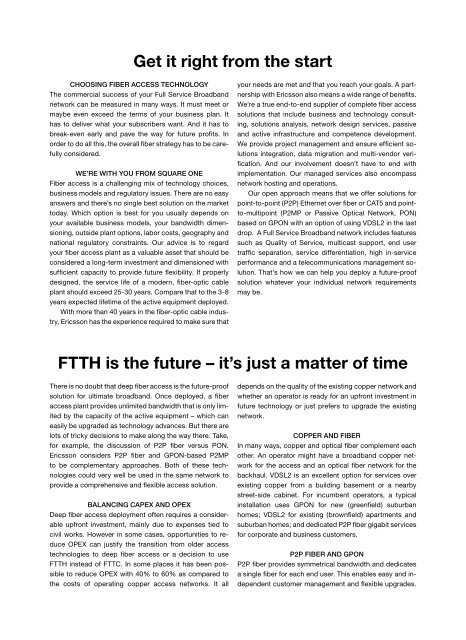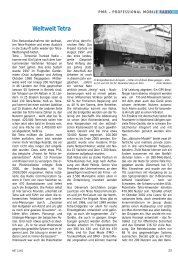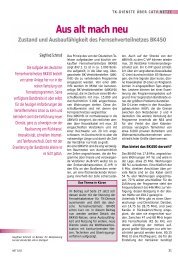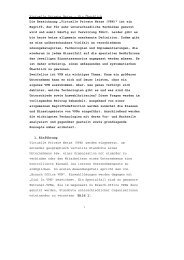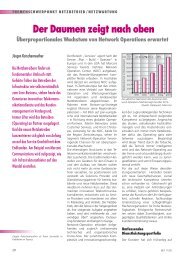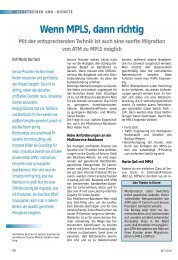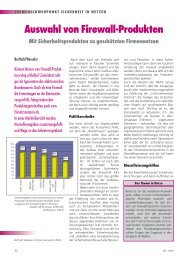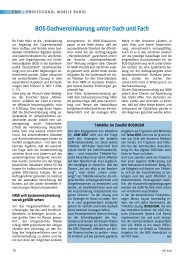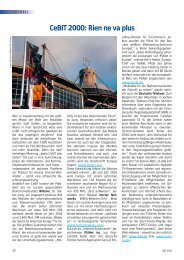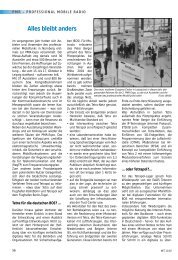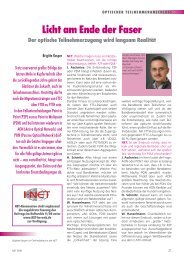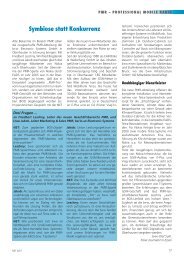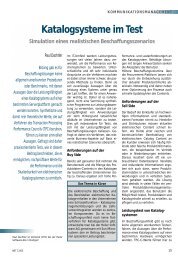You also want an ePaper? Increase the reach of your titles
YUMPU automatically turns print PDFs into web optimized ePapers that Google loves.
Get it right from the start<br />
choosing fiber Access technology<br />
The commercial success of your Full Service Broadband<br />
network can be measured in many ways. It must meet or<br />
maybe even exceed the terms of your business plan. It<br />
has to deliver what your subscribers want. And it has to<br />
break-even early and pave the way for future profits. In<br />
order to do all this, the overall fiber strategy has to be carefully<br />
considered.<br />
we’re with you from squAre one<br />
Fiber access is a challenging mix of technology choices,<br />
business models and regulatory issues. There are no easy<br />
answers and there’s no single best solution on the market<br />
today. Which option is best for you usually depends on<br />
your available business models, your bandwidth dimensioning,<br />
outside plant options, labor costs, geography and<br />
national regulatory constraints. Our advice is to regard<br />
your fiber access plant as a valuable asset that should be<br />
considered a long-term investment and dimensioned with<br />
sufficient capacity to provide future flexibility. If properly<br />
designed, the service life of a modern, fiber-optic cable<br />
plant should exceed 25-30 years. Compare that to the 3-8<br />
years expected lifetime of the active equipment deployed.<br />
With more than 40 years in the fiber-optic cable industry,<br />
Ericsson has the experience required to make sure that<br />
There is no doubt that deep fiber access is the future-proof<br />
solution for ultimate broadband. Once deployed, a fiber<br />
access plant provides unlimited bandwidth that is only limited<br />
by the capacity of the active equipment – which can<br />
easily be upgraded as technology advances. But there are<br />
lots of tricky decisions to make along the way there. Take,<br />
for example, the discussion of P2P fiber versus PON.<br />
Ericsson considers P2P fiber and GPON-based P2MP<br />
to be complementary approaches. Both of these technologies<br />
could very well be used in the same network to<br />
provide a comprehensive and flexible access solution.<br />
bAlAncing cApeX And opeX<br />
Deep fiber access deployment often requires a considerable<br />
upfront investment, mainly due to expenses tied to<br />
civil works. However in some cases, opportunities to reduce<br />
OPEX can justify the transition from older access<br />
technologies to deep fiber access or a decision to use<br />
FTTH instead of FTTC. In some places it has been possible<br />
to reduce OPEX with 40% to 60% as compared to<br />
the costs of operating copper access networks. It all<br />
your needs are met and that you reach your goals. A partnership<br />
with Ericsson also means a wide range of benefits.<br />
We’re a true end-to-end supplier of complete fiber access<br />
solutions that include business and technology consulting,<br />
solutions analysis, network design services, passive<br />
and active infrastructure and competence development.<br />
We provide project management and ensure efficient solutions<br />
integration, data migration and multi-vendor verification.<br />
And our involvement doesn’t have to end with<br />
implementation. Our managed services also encompass<br />
network hosting and operations.<br />
Our open approach means that we offer solutions for<br />
point-to-point (P2P) Ethernet over fiber or CAT5 and pointto-multipoint<br />
(P2MP or Passive Optical Network, PON)<br />
based on GPON with an option of using VDSL2 in the last<br />
drop. A Full Service Broadband network includes features<br />
such as Quality of Service, multicast support, end user<br />
traffic separation, service differentiation, high in-service<br />
performance and a telecommunications management solution.<br />
That’s how we can help you deploy a future-proof<br />
solution whatever your individual network requirements<br />
may be.<br />
FTTH is the future – it’s just a matter of time<br />
depends on the quality of the existing copper network and<br />
whether an operator is ready for an upfront investment in<br />
future technology or just prefers to upgrade the existing<br />
network.<br />
copper And fiber<br />
In many ways, copper and optical fiber complement each<br />
other. An operator might have a broadband copper network<br />
for the access and an optical fiber network for the<br />
backhaul. VDSL2 is an excellent option for services over<br />
existing copper from a building basement or a nearby<br />
street-side cabinet. For incumbent operators, a typical<br />
installation uses GPON for new (greenfield) suburban<br />
homes; VDSL2 for existing (brownfield) apartments and<br />
suburban homes; and dedicated P2P fiber gigabit services<br />
for corporate and business customers.<br />
p2p fiber And gpon<br />
P2P fiber provides symmetrical bandwidth and dedicates<br />
a single fiber for each end user. This enables easy and independent<br />
customer management and flexible upgrades.


